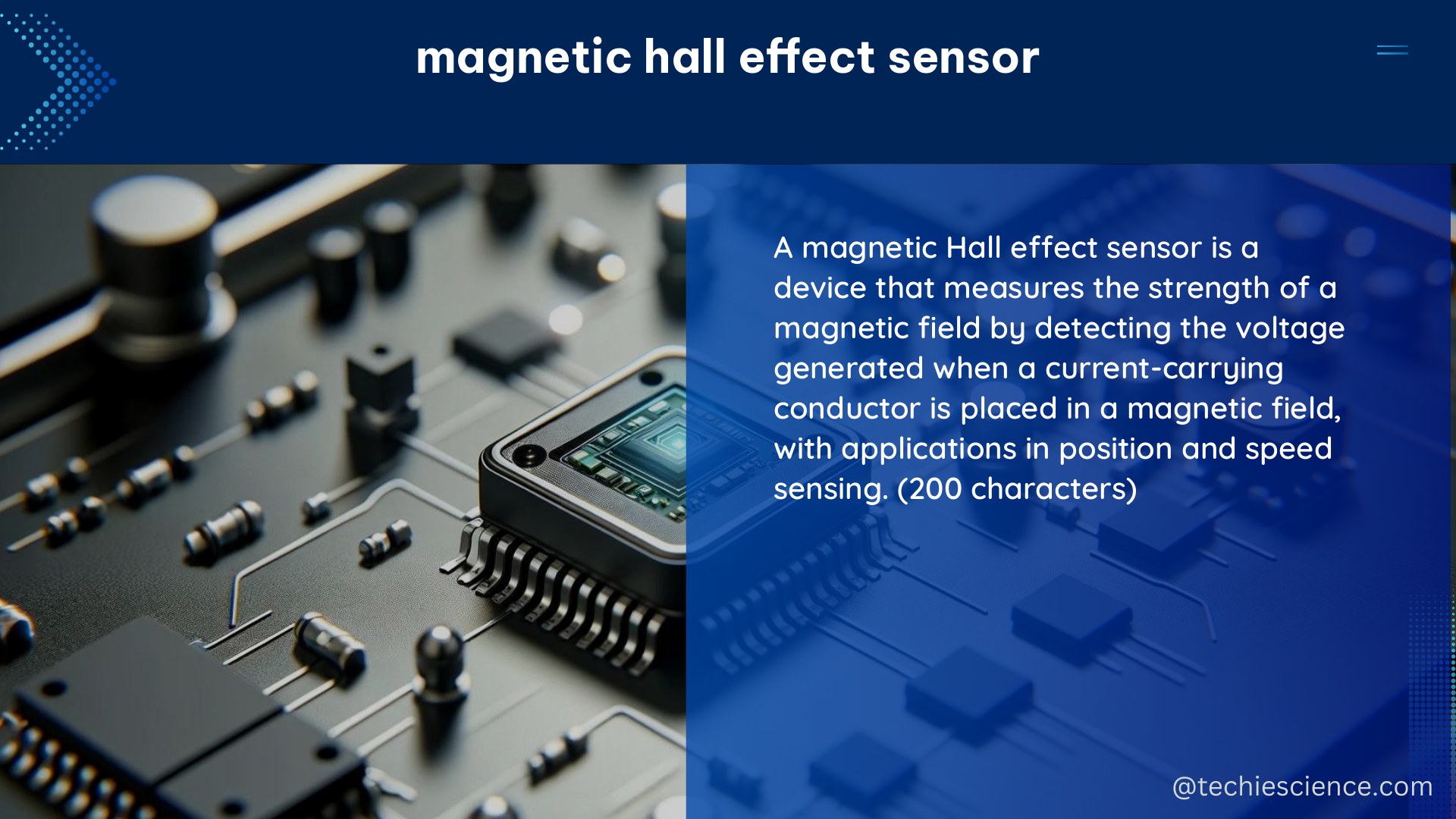Magnetic Hall Effect Sensors are electronic devices that convert magnetic fields into electrical signals, enabling a wide range of applications, including distance measurement, position sensing, speed detection, and current sensing. These sensors leverage the Hall Effect, a principle discovered by Edwin Hall, which describes the behavior of electric charge in a magnetic field. When an electric current flows through a material in the presence of a magnetic field, the electrons experience a force perpendicular to both the current and the magnetic field, leading to a voltage difference across the material. This voltage difference, known as the Hall voltage, is the fundamental principle behind the operation of Hall Effect Sensors.
Technical Specifications of Magnetic Hall Effect Sensors
- Sensitivity:
- Sensitivity is the ratio of the output voltage to the magnetic field strength.
- It is typically measured in millivolts per Gauss (mV/G) or volts per Tesla (V/T).
- For example, the DRV5056 sensor has a sensitivity of 1.2 mV/G.
-
High sensitivity is crucial for accurate measurements, as it allows the sensor to detect small changes in the magnetic field.
-
Linearity:
- Linearity is the degree to which the output voltage is proportional to the magnetic field strength.
- It is typically measured as a percentage of the full-scale output.
- For example, the DRV5056 sensor has a linearity of ±2% of full-scale output.
-
Linearity ensures that the sensor’s output accurately reflects the changes in the magnetic field, enabling precise measurements.
-
Hysteresis:
- Hysteresis is the difference in output voltage for the same magnetic field strength, depending on whether the magnetic field is increasing or decreasing.
- It is typically measured in percentage of the full-scale output.
- For example, the DRV5056 sensor has a hysteresis of ±1% of full-scale output.
-
Low hysteresis is desirable, as it ensures consistent and reliable sensor performance.
-
Temperature Coefficient:
- Temperature coefficient is the change in sensitivity with temperature.
- It is typically measured in percentage per degree Celsius.
- For example, the DRV5056 sensor has a temperature coefficient of ±0.05%/°C.
-
A low temperature coefficient is essential for maintaining sensor accuracy in environments with varying temperatures.
-
Bandwidth:
- Bandwidth is the frequency range over which the sensor can accurately measure the magnetic field.
- It is typically measured in Hertz.
- For example, the DRV5056 sensor has a bandwidth of 10 kHz.
- A higher bandwidth allows the sensor to detect and respond to rapid changes in the magnetic field, making it suitable for high-speed applications.
DIY Project with Magnetic Hall Effect Sensor: Building a Linear Position Sensor

A simple DIY project with a Magnetic Hall Effect Sensor is to build a linear position sensor. This project leverages the sensor’s ability to convert magnetic field changes into electrical signals, allowing for the measurement of linear displacement.
Here’s how you can build a linear position sensor using a Magnetic Hall Effect Sensor:
-
Sensor Placement: Position the Magnetic Hall Effect Sensor, such as the DRV5056, near a magnet. The sensor should be placed in a way that allows the magnet to move linearly in relation to the sensor.
-
Magnet Movement: As the magnet moves, the magnetic field strength experienced by the sensor will change. This change in magnetic field strength will be reflected in the sensor’s output voltage.
-
Sensor Calibration: To convert the sensor’s output voltage into a linear position measurement, you’ll need to calibrate the sensor. This can be done by recording the sensor’s output voltage at known magnet positions and then using this data to create a linear relationship between the voltage and the position.
-
Accuracy and Resolution: The DRV5056 sensor, for example, can measure the distance between a tool base and lid with an accuracy of ±40 μm. By optimizing the sensor’s placement along the tool, you can achieve high-precision linear position measurements.
-
Temperature Considerations: The DRV5056 sensor has a wide temperature range, from -40°C to +125°C, making it suitable for applications with varying temperatures. This ensures that the sensor’s performance remains consistent and accurate, even in challenging environmental conditions.
By following these steps, you can create a DIY linear position sensor using a Magnetic Hall Effect Sensor, enabling precise measurements of linear displacement in a variety of applications.
References
- DRV5056: Accurately measuring distance using hall effect – Sensors
- Hall Effect Sensors: A Comprehensive Guide | MPS
- Hall Effect Measurement Handbook – Quantum Design

The lambdageeks.com Core SME Team is a group of experienced subject matter experts from diverse scientific and technical fields including Physics, Chemistry, Technology,Electronics & Electrical Engineering, Automotive, Mechanical Engineering. Our team collaborates to create high-quality, well-researched articles on a wide range of science and technology topics for the lambdageeks.com website.
All Our Senior SME are having more than 7 Years of experience in the respective fields . They are either Working Industry Professionals or assocaited With different Universities. Refer Our Authors Page to get to know About our Core SMEs.